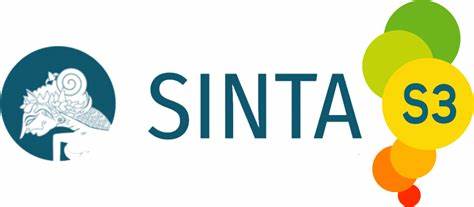THE COMPARISON BETWEEN MALE AND FEMALE STUDENTS’ SPEAKING ABILITY
DOI:
https://doi.org/10.22460/eltin.v4i2.p21-32Abstract
The purpose of this research is to investigate the male and female students‟ speaking
ability. Particularly, this reserach has several aims: to know the male and female
students‟ speaking ability at SMAN 1 Bantarujeg, and to know the differences
between them. This research is presented in qualitative approach and comparative
method to identify the male and the female students‟ speaking ability . In collecting
the data, the researcher did some steps. Those were observation and recorded spoken
test. Then, the data was analyzed based on four indicators including pronunciation,
grammar, vocabulary, and fluency. The researcher got the result, the average score of
male is 13.5 and female is 14.8. Thefirst indicator is pronunciation, the male students‟
score (35) is higher than the female students‟ score (34). The second is grammar, the
male students‟score (31) is lower than the female students‟ score (38). The third
isvocabulary, the male students‟ score (33) is lower than the female students‟
score(41). The last is fluency, the male students‟ score (36) is higher than thefemale
students‟ score (35). Based on the analysis, it can be concluded that there was a
significantdifference between the male and the female students‟ speaking ability.
Keywords: speaking ability, teaching.
References
Brown, G. & Yule, G. (1989). Teaching the Spoken Language. Cambridge University
Press.
Harmer, Jeremy. (2001). The Practice of English Language Teaching. Longman.
Hedge, T. (2000). Teaching and Learning in the Language Classroom. Oxford:
Oxford University Press.
Hughes, Rebecca. (2002). Teaching and Researching Speaking. London: Pearson
Education.
Lakoff, R. T. (1976). Language and Woman's Place. New York: Octagon Books.
Louma, Sari. (2004). Assessing Speaking. UK: Cambridge University Press.
Nunan, David. (1989). Language Teaching Methodology: A Text Book for
teacher. Sidney: Prentice Hall.
Nunan, David. (2003). Practical English Language Teaching. New York:
McGrawHill.
O„Malley, J.M. & Valdez Pierce, L. (1996). Authentic Assessment for English
Language Learners. MA: Addison-Wesley.
Ponton, Cate. (1985). Language and Gender:making the difference. Victoria: Deakin
University Press.
Tannen, Deborah. (1990). You Just Don’t Understand Women and Men in
Conversation. New York: HarperCollins Publishers Inc.
Thornbury, Scott. (2009). How to Teach Speaking. Longman.
Tymson, C. (1998). Gender Games: Doing Business with the Opposite Sex. Australia:
Tymson Communication.





